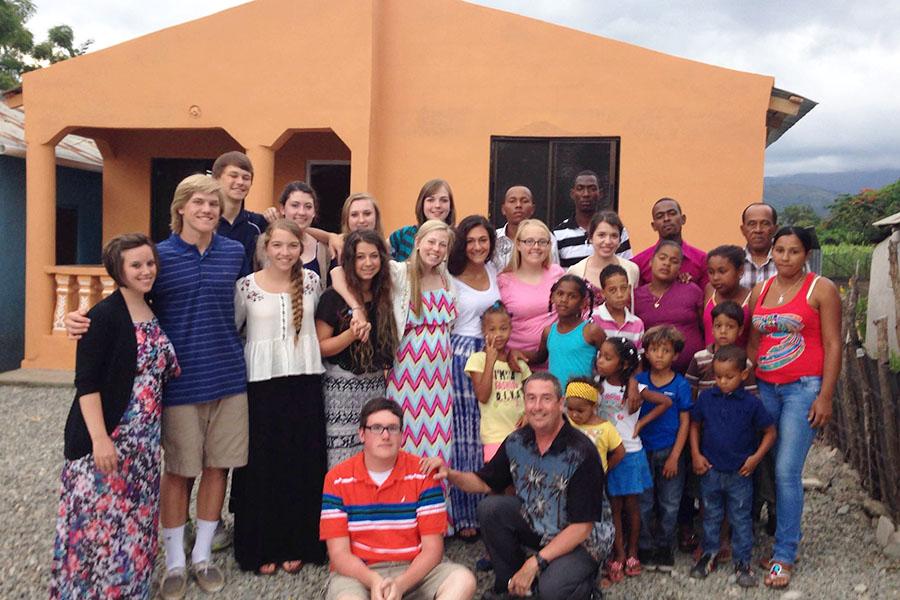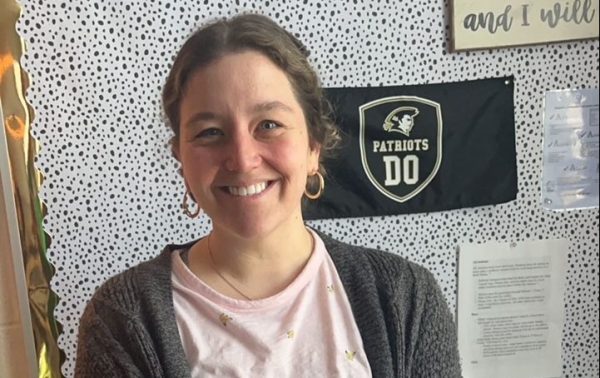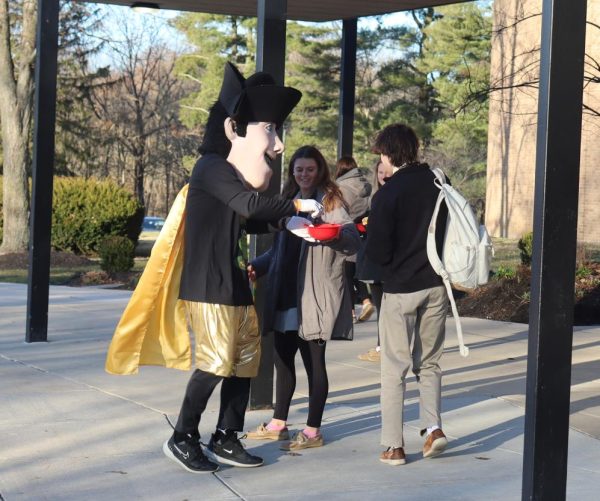Dominican Republic service trip exposes editor to new culture
The week of June 14-21, JC sent a team of 12 students, myself included with religion teacher Thomas Vierheller and former religion teacher Elise Gower to San Juan, Dominican Republic. We went to work with an organization called Cambiando Vidas that builds affordable houses for families in need. Throughout my journey, I kept a journal detailing the new experiences and tasks brought by each day, the new people I met, and the amazing memories created in the DR.
Day 1:
Arrivals are scary, but also exhilarating. The whole plane ride there, I worried about coming off as too “American.” However the minute after we landed I realized I couldn’t have been more wrong. Jose, the leader of Cambiando Vidas, and Cuco, our bus driver for the week, immediately greeted us with the warmest of smiles. The minute we got on the bus, Jose started joking with us as if we were long-lost friends being reunited, and all my anxieties drifted away.
We took the bus to San Juan from Santo Domingo, and everyone fell asleep on each other. We also stopped at a rest stop on the way there, and that bathroom experience is one I will never forget for many reasons, one being the lack of toilet seats or plumbing.
We then arrived at Hotel el Libano. It wasn’t a Hilton or anything. My room, which I shared with two of my team members, contained three queen size beds, air conditioning, and a bathroom with running water. Though we couldn’t flush anything down the toilet or use the water from the sink, and had to wear shower flip-flops, it was more than I expected. That night Jose took us to the restaurant where we’d be eating every night after work, and we met the family of four that we’d be building the house for.
It was obvious to see Mary and Huber were extremely grateful to Jose and our group for helping them. Jose translated for us, but even words couldn’t express the gratitude present on their faces. All night they had smiles and the happiest gleams in their eyes. We met their sons as well: Xavier who was less than a month old and Estarlin who was about 3. Though communication was hard due to the language barrier, Mary and Huber welcomed us to their country, and invited us to their home. I couldn’t wait to start building the next day.
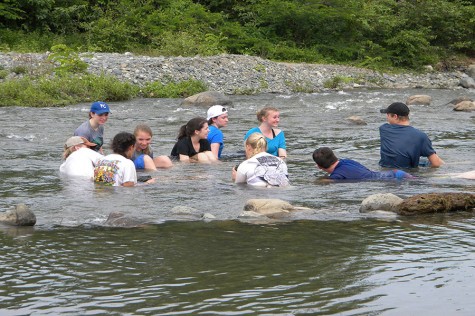
After a long first day, members of the DR team take a relaxing dip in a local river.
Day 2:
First day on site. When Gower told us we’d get filthy, she wasn’t kidding. By the end of the day, I was covered in sweat and mezcla (cement), and dirt was piled underneath my fingernails. All the walls of the house were put up that day. Assembly lines carried cinder block after cinder block through the house into each corresponding room and then mezcla was placed in between each row of cinder blocks.
I spent the entire morning working with Larro on the front bedroom. He was extremely particular, moving cinder blocks inch by inch until they were positioned correctly, but I think he came around to enjoying my company. Every time we finished a level of the wall, we would fist bump. All the workers, most of whom were volunteers from the community, were extremely patient with us. Larro and one of the boys around my age must have showed my at least six times how to spread the mezcla correctly with the trough.
At the end of the day, Jose and Cuco took our group to the local river. It was a fantastic bonding and cultural experience. Twelve kids, all in dirty scrubs and t-shirts, probably looked so peculiar to the natives who used the river for bathing and washing clothes. Our group waded in the water for at least 20 minutes, talking and laughing, and it was awesome to see people of another culture in their everyday lives.
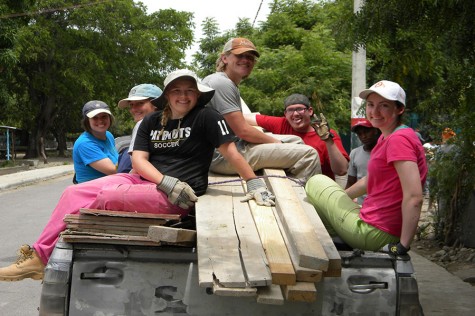
Members from the team ride with Gallo, one of the workers, to help unload materials.
Day 3:
The site was less crowded because it was a weekday, and I felt I really got to know the workers and children of the community on a more personal level. The day started off by throwing large stones into a 20 foot deep hole someone dug for the septic system. All the children of the community wanted to help us. Francelia, a 6-year-old girl, was so eager to help that she carried rocks as big as the ones I was carrying.
After that, the day was pretty slow, but we found ways to keep busy. There were constant assembly lines carrying buckets of cement to workers to pour into the walls. My whole body was caked with cement by the end of the day.
Later in the afternoon about six of us from the group rode in the bed of Jose’s brother Gallo’s pickup truck to pick up countertops from a supplier, and although our help wasn’t really needed, it was awesome being able to ride around the community and see more parts of the country.
Day 4:
The day wasn’t hectic but it wasn’t slow either. We all started the day by removing nails from a pile of boards, which took a while. The ceiling was put on the house, and everyone in the community who contributed, from the Dominican and American workers to the children and the women cooking lunch for everyone, came over and wrote their own names on the rafters. It was the best feeling to be able to look up at the ceiling and see your name amongst the names of the children, workers, and my adopted family members.
Afterwards, a few of us helped workers in the kitchen sponge cement over the cinderblock walls. That was when we met Kelvin, or “Moto.” Kelvin couldn’t hear or speak and made really high-pitched noises to communicate, and the workers were extremely caring and comfortable with him. The spirit of the all the workers was really what inspired me to work hard every day and enjoy the work I was doing.
Day 5:
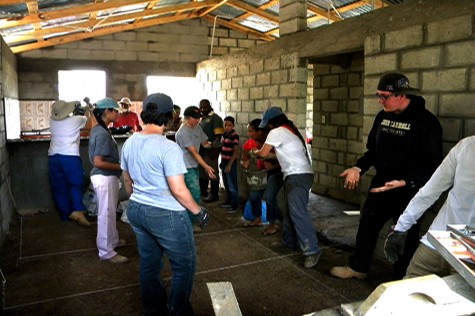
The team and members of the community form an assembly to carry cement through the house to level the floors.
As usual, the day started with an assembly line. But by now our group was so in sync, it seemed almost harmonious. About six of us from the group, and some of the women and children, helped Larro and Victor, another worker, level and lay the floors.
At lunch that day out in the field, some of us started a game of “rock ball” and soon all the children joined. The game then turned into a piggy-back ride face off, with almost every member of our group running around with a child on their back.
After work all the kids climbed on the bus and we rode to a baseball field for a “friendly” game of baseball. It was basically our group split up amongst a team of children and a team of workers. Needless to say, the workers dominated.
That night at the restaurant for dinner, Jose set up a karaoke night for our group. At this point, I wasn’t too worried about coming off as too “American” because it was pretty obvious after our loud and obnoxious group rendition of “Sweet Home Alabama.”
Day 6:
We finished the house today. It was both a joyous and sad occasion, however, because it was our last day on site. Our last day with the community.
That morning, a few of us from the group spent a good hour sifting dirt and rocks to use for the front entrance of the house. Afterwards, the day was pretty slow and we painted and primed the front of the house in a rich, tangerine color. Jose took us to the river again for lunch and we all went swimming and finally got a chance to relax after the long week.
We arrived back at the house that night in clothes much dressier than scrubs and t-shirts for the community fiesta and housewarming. The house was packed with people I’d spent the whole week with and new faces from the community. After eating, everyone started dancing, and although there wasn’t any room, we were all grabbed by members of the community and tried our best to keep up with their great rhythm and quick feet.
Day 7:
We had our last breakfast in San Juan and at the Hotel el Libano. Then Jose and Cuco came to pick us up and take us to Santo Domingo.
When we stopped at the same rest stop as the first day, the initial shock that fazed us that first day had disappeared. An hour later we stopped at the beach to eat lunch and swim. The beach was absolutely gorgeous — the waters were crystal blue and I swear it resembled a postcard.
In Santo Domingo, we all shopped on the market place for a couple hours, had our final dinner with Jose, and attended an outdoor concert with flamenco dancers and cultural music. Cuco showed me some old dance steps and it was the perfect way to end my last night.
Day 8:
At some point during the day, almost everyone cried, but I didn’t. It’s not that I wasn’t sad, but my happiness was just so much greater.
— Claire Grunewald
That morning at breakfast, the whole group was somber and to help, Jose had a surprise planned for us. He took us to Los Tres Ojos, a national park with three underground lagoons. It was absolutely breathtaking.
Saying good-bye is always hard. I gave Cuco the biggest hug of all and I wish I was able to understand everything he said to me, but even through the language barrier I knew he was sincerely sad to see us go. Saying goodbye to Jose was probably the hardest thing I had to do. His dedication to his community and how he went out of his way to help others left such a positive impression on me and the trip as a whole.
At some point during the day, almost everyone cried, but I didn’t. It’s not that I wasn’t sad, but my happiness was just so much greater. I got to spend an entire week with this amazing group of people, building a home for a family in need, experiencing a new culture, and growing as an individual.
House 58 of Cambiando Vidas felt like another home to me and I couldn’t have been happier.
Claire Grunewald is a Lifestyles Editor for The Patriot and jcpatriot.com.



